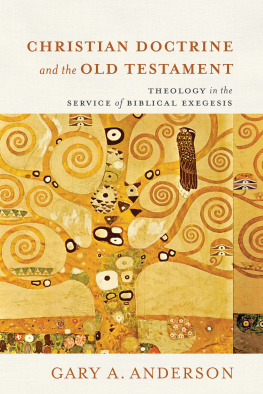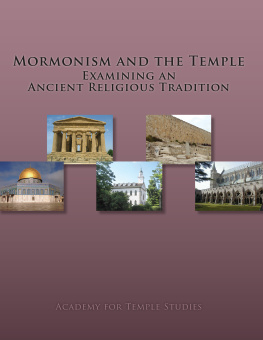Anderson Gary C. - Little Crow, spokesman for the Sioux
Here you can read online Anderson Gary C. - Little Crow, spokesman for the Sioux full text of the book (entire story) in english for free. Download pdf and epub, get meaning, cover and reviews about this ebook. City: St. Paul;MN, year: 1986;2009, publisher: Minnesota Historical Society Press, genre: Politics. Description of the work, (preface) as well as reviews are available. Best literature library LitArk.com created for fans of good reading and offers a wide selection of genres:
Romance novel
Science fiction
Adventure
Detective
Science
History
Home and family
Prose
Art
Politics
Computer
Non-fiction
Religion
Business
Children
Humor
Choose a favorite category and find really read worthwhile books. Enjoy immersion in the world of imagination, feel the emotions of the characters or learn something new for yourself, make an fascinating discovery.

- Book:Little Crow, spokesman for the Sioux
- Author:
- Publisher:Minnesota Historical Society Press
- Genre:
- Year:1986;2009
- City:St. Paul;MN
- Rating:3 / 5
- Favourites:Add to favourites
- Your mark:
- 60
- 1
- 2
- 3
- 4
- 5
Little Crow, spokesman for the Sioux: summary, description and annotation
We offer to read an annotation, description, summary or preface (depends on what the author of the book "Little Crow, spokesman for the Sioux" wrote himself). If you haven't found the necessary information about the book — write in the comments, we will try to find it.
Little Crow, spokesman for the Sioux — read online for free the complete book (whole text) full work
Below is the text of the book, divided by pages. System saving the place of the last page read, allows you to conveniently read the book "Little Crow, spokesman for the Sioux" online for free, without having to search again every time where you left off. Put a bookmark, and you can go to the page where you finished reading at any time.
Font size:
Interval:
Bookmark:

Little Crow in 1851 by Frank Blackwell Mayer (1895)
CROW
Spokesman for the Sioux
GARY CLAYTON ANDERSON

MINNESOTA HISTORICAL SOCIETY PRESS
ST. PAUL
1986 by the Minnesota Historical Society. All rights reserved. No part of this book may be used or reproduced in any manner whatsoever without written permission, except in the case of brief quotations embodied in critical articles and reviews. For information, write to the Minnesota Historical Society Press, 345 Kellogg Boulevard West, St. Paul, Minnesota 551021906.
www.mnhs.org/mhspress
Printed in Canada
10 9 8 7 6
International Standard Book Number 0-87351-196-4
 The paper used in this publication meets the minimum requirements of the American National Standard for Information SciencesPermanence for Printed Library Materials, ANSI Z39.48-1984.
The paper used in this publication meets the minimum requirements of the American National Standard for Information SciencesPermanence for Printed Library Materials, ANSI Z39.48-1984.
Library of Congress
Cataloging-in-Publication Data
Anderson, Gary Clayton, 1948
Little Crow, spokesman for the Sioux.
Bibliography: p.
Includes index.
- Little Crow, d. 1863.
- Dakota IndiansBiography.
- Indians of North AmericaMinnesotaBiography.
Ebook ISBN: 978-0-87351-679-2
I. Title.
E99.D1L732 1986 977.600497 [B] 86-795
To Laura
The Minnesota Historical Society, through its editors and research fellows, played a major role in the conception and development of this book. I must give special thanks to Alan R. Woolworth, for many years a research fellow at the society. Alan provided intellectual as well as research aid, sending me photocopies of obscure material that in many cases helped bring Little Crow to life. Editor Sally Rubinstein worked tirelessly, checking sources and polishing my prose. John McGuigan, the managing editor at MHS Press, kept me on schedule and, as unusual as it may seem, became a good friend during the process. At a critical point, the College of Liberal Arts of Texas A & M University awarded me a writing grant. Finally, colleagues Robert Calvert and Dale Knobel read various portions of the manuscript and offered well-defined criticism. Few writers have been blessed with more efficient and helpful editors and critics.
One of the most difficult challenges facing historians today is to write the history of the dispossessed. Such people leave few records and are frequently viewed by the dominant culture as being worthy of nothing more than a footnote in the ever-moving vision of a nations past. Traditional approaches to solving this problem have focused on writing about nameless masses, be they slaves in the Old South or, in the case of the Indian, tribal groups. Obviously, the nature of government records and manuscript collections has mitigated against attempts at writing an individuals biography, traditionally an important historical genre. When biographies have been written, they often have been apologetic; because of the dearth of source material, minority leaders are usually portrayed as heroic actors in the larger context of a struggle against majority groups rather than as men or women with feelings and faults, who acted upon the dominant culture and tried to reshape it.
In the case of the American Indian, with few exceptions biographies have been written of men who became famous because they reacted to white aggression by leading resistance movements and capturing the imagination of the American public. The likes of Sitting Bull, Pontiac, Joseph, Black Hawk, and King Philip, just to name a few, provide the best examples. Alvin M. Josephy, Jr., immortalized leaders of this genre in his classic book, The Patriot Chiefs, a chronicle of the great leaders of the American Indian. While Josephy attempted to explain in his introduction that other leaders, mainly those who worked with Euro-Americans, also might be considered as having made important contributions, he concluded that so-called good Indians would never be the great heroes of the American Indian. Only a selected few merited such status, and those generally had demonstrated prominence or success in war.
Certainly such apologetic biography has a place in scholarship. Josephys book and others of its kind provide an important ethnocentric viewpoint. Yet the majority of Indian leaders never experienced the euphoria of a Sitting Bull or a Pontiac or even the limited success of a King Philip or a Joseph. Biographies of supposedly less successful Indian leaders can be just as important, especially if they advance our understanding of the way in which leaders tried to shape interethnic relations, rather than simply react to them. The biography of Little Crow that follows, then, is not the story of a patriot chief. Instead, it is about an important, intelligent, and tragic figure in history whose political career (184663) vividly illustrates the compromises, dilemmas, and often impossible situations that evolved in dealing with whites in the nineteenth century.
In addition, Little Crow is significant because of the dichotomy that he represents in history and the myths surrounding that dichotomy. He has become a symbol of Indian resistance and the failure of a government policy designed to assimilate the western Indians peacefully. The Dakota War of 1862, one of the bloodiest Indian wars in history, was in many ways the opening shot of a series of struggles on the northern Great Plains that culminated in the tragic affair known as Wounded Knee. Yet the war in Minnesota manifested such brutality that it is impossible for anyone who studies it to be unquestioningly supportive of the Indians, despite the unfulfilled promises of the government and the hardship that such breaches of faith created for the eastern Sioux people. Indeed, Little Crows role in this cruel war has made an objective assessment of his life almost impossible. His end, as a trophy exhibited by the state, seemed at the time a more than fitting tribute to the triumph of civilization over savagery.
Writers have had difficulty in dealing historically with this dual image. To some, Little Crow became a tragic but guilty figure who sanctioned brutality and justly deserved his ignominious fate.
Still, in an age when not only the survivors of the war but many of their children have passed on, writing an objective biography of Little Crow remains a challenge. What Little Crow became in the eyes of historians, Indians, and the public at large fails to convey any sense of the man as a leader and an Indian. Neither aspect of the dual image that exists is accurate. More importantly, myths have developed in an effort to make these images seem real. Despite the efforts of many writers to prove the contrary, Little Crow did not initiate the uprising, nor did he lead the Indian forces into it. He was not a brutal person and, according to all the available evidence, never killed anyone during the fighting. Yet he played a major role in the war and worked diligently to expand the fighting to include other Sioux tribes once the war began.
In addition to these enumerated shortcomings, previous accounts of Little Crow have totally failed to assess his political role. Little Crows understanding of the nature of the Indian-white relationship was far superior to that of his contemporaries. He developed a rational policy for dealing with whites, based it upon negotiation and accommodation rather than war, and thus preserved Indian identity and peace. His attempt to implement such a policy may by itself warrant a study of his life.
Font size:
Interval:
Bookmark:
Similar books «Little Crow, spokesman for the Sioux»
Look at similar books to Little Crow, spokesman for the Sioux. We have selected literature similar in name and meaning in the hope of providing readers with more options to find new, interesting, not yet read works.
Discussion, reviews of the book Little Crow, spokesman for the Sioux and just readers' own opinions. Leave your comments, write what you think about the work, its meaning or the main characters. Specify what exactly you liked and what you didn't like, and why you think so.







